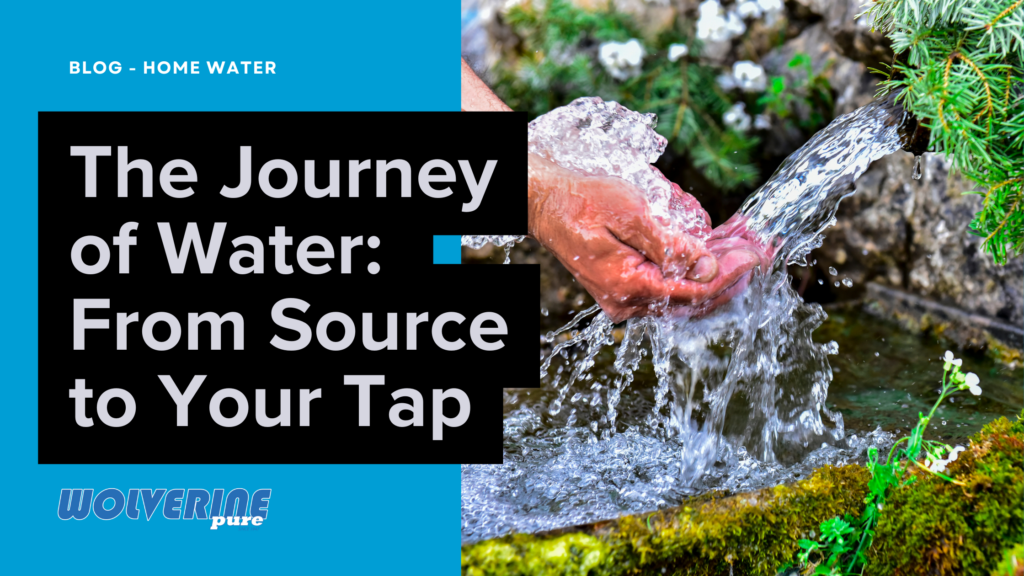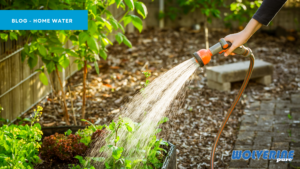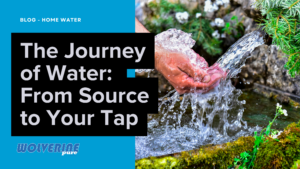Have you ever wondered how water travels from a distant source to your kitchen faucet? It undergoes a lengthy process involving various systems that ensure it is safe to consume and delivered to your home. However, this process can expose the water to various contaminants. Knowing how this journey works can help you make better choices to keep your family’s water safe and clean.
Step 1: The Source – Nature’s Reservoirs
Water begins its journey in natural sources, such as lakes, rivers, reservoirs, or underground aquifers. Depending on where you live, your water may come from surface water, such as Lake Michigan, or a groundwater well.
Did You Know? Groundwater is generally cleaner than surface water due to natural filtration through soil and rock, but it’s not immune to contamination from nearby land use, agriculture, or industrial waste.
Step 2: Municipal Treatment – The First Line of Defense
From the source, water is transported to municipal treatment plants. Here, it’s filtered, treated with disinfectants (like chlorine), and tested for compliance with safety standards. While this step removes many contaminants, it’s not foolproof.
Potential Risks:
- Chlorine & Byproducts: These disinfectants can leave behind residues that may irritate skin and affect taste.
- Old Infrastructure: Aging pipes in the municipal system can introduce rust, lead, or other harmful materials.
- Emerging Contaminants: Substances such as PFAS, pharmaceuticals, and microplastics often evade traditional treatment methods.
Step 3: Distribution – Through Pipes and Pumps
Once treated, water flows through miles of underground pipes to reach your home. However, even at this stage, contamination remains a possibility.
Watch Out For:
- Lead pipes and solder (common in older homes) can leach toxic metals into your water.
- Pipe corrosion or breaks can allow bacteria or debris to enter the system.
- Water stagnation in low-use areas can reduce the effectiveness of chlorine, allowing bacterial growth to occur.
Step 4: Your Home – The Final Destination
Finally, water arrives at your tap. But your home’s plumbing may also impact water quality. Water heaters, faucets, and localized buildup in pipes can affect taste, smell, and even safety.
This is where Wolverine Water Systems comes in.
Protecting Your Water at the Point of Use
Even the cleanest municipal water can pick up impurities before it reaches you. That’s why whole-home filtration and softening systems are essential. Our systems are designed to:
- Remove harmful contaminants like PFAS, chlorine, and heavy metals
- Eliminate hard water issues that damage appliances and pipes
- Improve taste, smell, and overall water quality
- Provide peace of mind with every drop
Take Control of Your Water Quality
Knowing the journey your water takes—from a distant source to your glass—empowers you to make informed choices about home water treatment. A whole-home system from Wolverine ensures the final step of that journey delivers the cleanest, safest water possible. Ready to upgrade your water?
Contact Wolverine Water Systems today for a free water assessment, and let’s ensure your water’s journey ends with purity at your tap.





